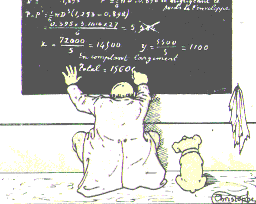Let $X={(X_t)}_{t\geq0}$ be an irreducible Markov process with generator $G$ and unique invariant law $\mu$. What is the difference between irreversible and out of equilibrium? If you do not know what is a generator, they you may replace it by a transition kernel without loss of interpretation.
Trajectories. A Markov process is a way to transform an initial law into a law of trajectory, by mean of a generator. The law of the trajectory ${(X_t)}_{t\geq0}$ depends on the law of $X_0$ as well as on the generator $G$. The equilibrium or invariant law $\mu$ depends only on $G$.
Reversibility. We say that $X$ is reversible when $X_0\sim\mu$ implies that for all $t\geq0$ the trajectory $(X_s)_{0\leq s\leq t}$ and the reversed trajectory ${(X_{t-s})}_{0\leq s\leq t}$ have same law. This means that if we start the process from its equilibrium, the notion of orientation of time is not visible. Up to regularity considerations, this is equivalent to say that the generator is a symmetric operator in $L^2(\mu)$. When $X$ is a finite Markov chain, this corresponds to the detailed balance condition $\mu(x)G(x,y)=\mu(y)G(y,x)$ for all $x,y$ in the state space. A famous theorem by Kolmogorov states that this is equivalent to say that the weight of all cycles with respect to the transition kernel or generator does not depend on the orientation of the cycle, and the remarkable fact about this criterion is that it does not involve $\mu$. This Kolmogorov insight on reversibility leads to the fact that non-reversible systems exhibit currents.
Out of equilibrium. We say that the process $X$ is out of equilibrium when it is not started from the equilibrium $\mu$ meaning that $X_0\not\sim\mu$. Up to regularity assumptions, for all initial law, the process converges in law to its equilibrium in long time, in other words $\lim_{t\to\infty}X_t=\mu$ in law. On the contrary, if $X_0\sim\mu$, then the process satisfies $X_t\sim\mu$ for all $t\geq0$ since $\mu$ is invariant, and we say in this case that the process is at equilibrium or stationary.
Conclusion. With this Markovian vocabulary, being out of equilibrium or not has nothing to do with being reversible or not. We may start a reversible process or not, out of equilibrium, or not. If we start a reversible process out of equilibrium, then typically it will converge exponentially fast to its equilibrium $\mu$ in $L^2(\mu)$, and the exponential speed of this convergence is given by the spectral gap of $G$.
A matter of definition. From the point of view of statistical mechanics, non-reversible processes, when started from an invariant law, are stationary, but the lack of detailed balance suggests to see them as out of equilibrium, reserving the term ``equilibrium'' to reversible cases. This corresponds to distinguish the terms ``stationary'' and ``equilibrium''. This point of view comes from a more general notion of stability by perturbation of physical systems, and the notion of reversibility in thermodynamics. A similar idea is at work statically in the notion of pseudo-spectrum of non-normal operators.

Equilibrium measure actually refers to a more general concept of stability with respect to perturbations of the dynamics. For reversible measures of a Markov process this imply the detailed balance condition. But is is more general than that (there exist equilibrium measures that are not reversible, like for the position/velocity OU). Then there exists 'non-equilibrium stationary measure', that are not stable for perturbations and usually present currents. Your definition of non-equilibrium is actually the one of a system in a non-stationary state.
Thanks for the feedback, Stefano. I have just updated a bit the post in this direction.